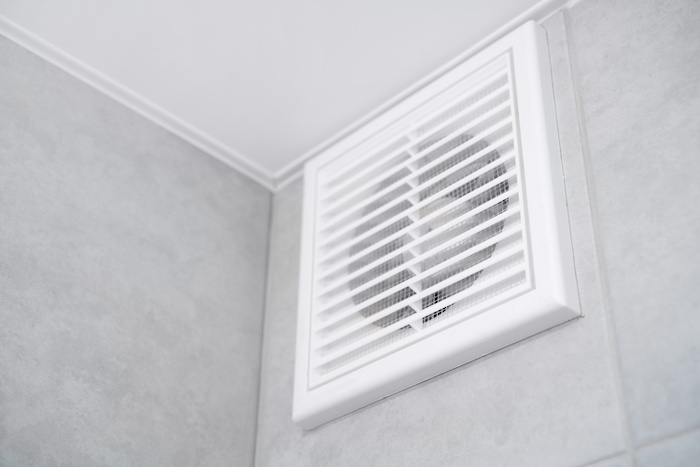
Indoor air quality is an issue of increasing concern. An Environmental Protection Agency test found that 96% of American homes have indoor air quality problems. These findings made the agency declare indoor air quality among the top five risks affecting public health.
Indoor air pollution has several detrimental effects, such as aggravated allergies, sneezing, itchy eyes, coughing, and severe health issues like lung cancer and respiratory disease. According to the WHO, over four million people die prematurely yearly from illnesses associated with poor indoor air quality.
While homeowners have implemented various ways to improve indoor air quality, such as working with Jarboe’s Louisville experts to install and ensure optimal functioning of HVAC units, poor ventilation is still a concern.
What Is Proper Ventilation?
Ventilation essentially involves substituting indoor air with fresh and filtered outdoor air in your home or commercial building. The main goal of ventilation is to provide an indoor environment with quality air. Ventilation replenishes oxygen, removes pollutants like smoke, moisture, dust, bacteria, and carbon dioxide, and controls temperature.
Proper ventilation systems should eliminate unpleasant odors and excessive moisture while introducing outside air and circulating internal air. This averts stagnation and possible pollution of indoor air. Proper ventilation is ideally a two-way process. There’s an exchange of air from inside and the outside and circulation within the building.
Why Is Proper Ventilation Important?
As mentioned, indoor air quality is a crucial health and safety issue. Common ventilation concerns to be wary of include:
- Inadequately maintained ventilation of HVAC systems
- Air pollution results from construction materials, such as particle board chemicals, paints, glues, and fiberglass
- Other air contaminants include bacteria, fungi, mold, volatile organic compounds, vapors, and unpleasant odors
- Increased number of people using a small workplace and number of hours spent in the workplace
Regardless of the concerns, ventilation helps maintain good indoor air quality. Ventilation helps dilute odors and reduce the concentration of airborne particles.
Tips to Improve Indoor Air Quality
Air quality affects the comfort and well-being of occupants in a building. It also affects the productivity of employees in commercial buildings. The following tips can improve indoor air quality:
1. Monitor Indoor Air Quality
Monitoring the quality of indoor air regularly is overly important. With the use of air quality monitors, you can get accurate readings of various air pollutants. These monitors detect the presence of VOCs, mold spores, and carbon monoxide in the air. High-end monitors provide alerts if the amount of these contaminants reaches dangerous levels.
2. Improve Ventilation in the Building
Proper ventilation contributes to good indoor air quality. You can improve ventilation through:
- Changing air filters – Air conditioners and furnaces have air filters that trap dust, debris, and other air contaminants. Continuous accumulation of these pollutants clogs the filters, affecting their proper functioning and indoor air quality.
- Open doors and windows – Leaving your windows and doors open is probably the simplest way to maintain proper ventilation. This allows cold air to enter the room from outside as warm air leaves the room.
- Install a ceiling fan – Installing a ceiling fan also improves air circulation. Ceiling fans circulate and cool air in the room.
- Clean your air vents – Air vents in your home also affect indoor air quality. Large vents or the return air vents pull indoor air into the HVAC unit for heating, cooling, or ventilating. Ensure that these vents are clean and free from dust to avoid contaminating the air being circulated.
- Leverage kitchen exhaust fan – If your home has a kitchen exhaust fan, turn it on when cooking to suck gasses and particles away immediately. Cooking using stoves or heaters releases carbon monoxide, which is very dangerous.
- Open your fireplace flue – Wood-burning fireplaces have a flue in the chimney. This duct releases combustion gasses and smoke from your fireplace. If you don’t open the flue, smoke and other combustion gasses will pollute your indoor environment.
3. Monitor Indoor Humidity Levels
Humidity also harms indoor air quality. You should maintain your home humidity levels between 30% and 50%. Excessive humidity or moisture can lead to mold and mildew growth. To reduce indoor humidity:
- Use bathroom fans – This draws humid air and other contaminants out of your bathroom. Always switch the fan on during and after steamy showers.
- Use a kitchen fan – Like the bathroom fan; it pulls humid air and dangerous cooking gasses out of your kitchen.
- Use a dehumidifier – A dehumidifier comes in handy if you live in areas with humid climates.
Endnote
Maintaining proper ventilation is important in ensuring that you enjoy good indoor air quality. Homeowners should be wary of the various causes of poor indoor air quality and implement preventive measures to enjoy a quality indoor environment.
